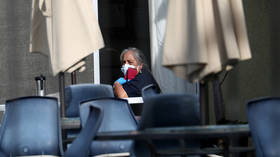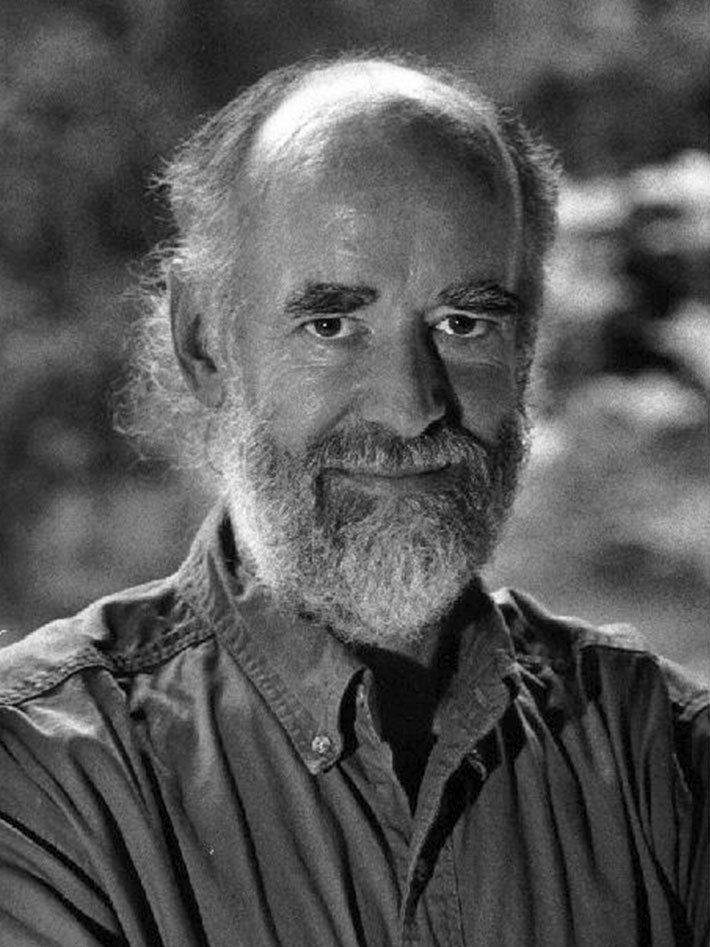Covid-19 is massacring US elderly in nursing homes, neglected for years by a power-hungry industry

The elderly in US care institutions are dying disproportionately from Covid-19. The pandemic has revealed the extent to which their wellbeing and safety have been sacrificed by an industry that prioritizes profit and influence.
The US response to the Covid-19 coronavirus pandemic has been one of the most chaotic and ineffective in the developed world, leading to a situation where this nation of 327 million people, with the globe’s costliest and arguably most advanced healthcare, accounts for almost a third of the total 4.4 million coronavirus cases and 28 percent of all deaths.
But the US situation is even more appalling when one looks at who is dying. It turns out that one third of all COVID-19 deaths have been patients or caregivers working in the nation’s 7,700 nursing homes for the care of the elderly and disabled. Of the total of 85,000 COVID-19 deaths in the US as of noon on May 14, more than 28,000 were elderly Americans.
A bi-partisan failure
There has been widespread criticism, even from many fellow Republicans especially at the state government level, of the Trump administration’s slow acknowledgement of the seriousness of the coronavirus threat, and its delayed and bungled efforts to provide states, hospitals and nursing homes with adequate ventilators, protective masks and testing kits to deal with the pandemic crisis. But the ongoing and worsening pandemic in the US is really a bi-partisan failure – especially when it comes to the elderly.
A look at where the most nursing-home deaths have been occurring shows that both Democratic and Republican-run states are doing a terrible job of protecting those in elder-care and convalescent institutions.
Minnesota, for example, with a Democratic governor and a legislature controlled by Republicans, and West Virginia, a state controlled entirely by Republicans, share the dubious honor of having the highest percentage of Covid-19 deaths to date, at 80 percent each, occurring in their state’s nursing homes. Second place on this grim list goes to Rhode Island, a solidly Democratic state, where 72 percent of coronavirus deaths have occurred in such institutions. In third place is my home state, Pennsylvania, with a Democratic governor and a Republican legislature, where 66 percent of Covid-19 deaths have been in elder-care facilities, followed by solidly Democratic Delaware, with 61 percent of its deaths occurring in nursing homes. Clearly, neither political party can be held solely responsible for this outrageous ongoing massacre of the nation’s elderly and their caregivers.
Also on rt.com Jailing people who use Covid-19 as bioweapon would be ‘discrimination.’ So better lock up everyone instead?I’m personally all too familiar with the problem. My own mother-in-law, a former superintendent of schools for Passaic, one of New Jersey’s largest urban school districts, died on April 26 at age 93 of a Covid-19 infection. She was one of 21 seniors who died of coronavirus at the home, where more than 116 of the 150 patients and close to half of the staff tested have tested positive for the virus. The contagion at the not-for-profit Jewish home in Rockleigh was first identified when the institution, although it had few test kits for the disease, began taking staff members’ temperatures when they arrived for each new shift. We learnt that two caregivers were found to have elevated temperatures one morning in early April and had been administered Covid-19 tests and sent home.
A day later, when those tests came back positive, there was a scramble to track down which patients and workers they had been in contact with over the prior week. Needless to say, with carriers known to be able to pass on the virus for five days prior to showing symptoms, it was a case of looking for the horse long after it had left the barn. Not surprisingly, within a week of those two workers testing positive, the nursing home had more than 20 patients and a dozen staff members testing positive. The contagion spread like wildfire after that, including to my mother-in-law, who died a few weeks later.
While the deaths and contagion at that nursing home, amounting to about one in seven patients, are shocking, it is scarcely the worst example of this crisis among the elderly, either in New Jersey or in the US. In one case, thanks to a whistleblower who called police, a nursing home was found to have hidden 17 bodies of elderly Covid-19 patients in a refrigerator truck parked behind the building. And the New Jersey Nursing Home for Veterans in Paramus has seen 74 deaths so far of elderly veterans, out of a total patient population of 314. That number is likely to grow significantly, since 112 of the facility’s remaining patients have reportedly tested positive for the virus.
Profits & politics before people
The problem at the federal level has been that, for over a month and a half, as breakouts of the deadly virus were cropping up all over the US, the growing pandemic was downplayed by President Trump and his administration. While the president was calling the disease a “hoax”, or claiming to have prevented it with a ban on Chinese travel to the US, no effort was made by the government to obtain and distribute test kits for the disease, or protective masks for caregivers. To make matters worse, at both the federal and state levels, nursing homes were second priority for a long time when it came to providing limited supplies of badly needed test kits and protective gear, such as N95 masks.
Even after the virus was detected among caregivers working at my mother-in-law’s facility, for example, nearly three months after the first appearance of the virus in the US, we learnt there were still too few protective masks on hand there to provide to all caregivers, much less to the patients they were treating. This shortage inevitably led to the disease’s rapid spread in the facility. This has been a common story at nursing homes and even hospitals across the US and, unfortunately, continues to be a problem.
A second factor that goes a long way towards explaining why nursing homes and their elderly patients have loomed so large in the US pandemic’s death count is the influence of money on regulation – or the lack of it – on these institutions. For years, nursing homes, once run largely by churches and religious foundations, began being sold off to aggressive for-profit corporations. These investor-owned firms saw such facilities as cash cows that could be milked for the lucrative patient-care revenues provided by wealthy families, government programs such as Medicare (for the elderly, disabled and especially people just released from hospitals and in need of rehabilitation services), Medicaid (for the poor), and private insurance. Over the decades, these corporations, many traded publicly on the stock market, came to own 70 percent of the nation’s nursing homes. Anxious to maximize profits by paring back the numbers of nurses and other staff, these companies have been among the biggest donors to politicians at both the state and federal level of any sector in the healthcare field.
According to the campaign-funding monitoring group Follow the Money, nursing homes and long-term-care companies donated a total of almost US$105 million to state-level candidates and party committees between 2001 and 2016 as part of a long-term strategy to gut state regulation. That’s $7 million a year, but the annual amount contributed nearly doubled over that 15-year period. More than half the money came from 38 big contributors, nearly all of them large, for-profit nursing-home chains. At the federal level, the healthcare sector spent $1.7 billion on lobbying between 2006 and 2009, and in 2013–2014, the American Health Care Association (AHCA) representing nursing homes was one of the 16 largest contributors among healthcare campaign funders.
Also on rt.com 'I don't think you are the end-all': Rand Paul calls out Fauci over Covid-19 policy based 'one wrong prediction after another'All that spending, it should be clear, is aimed at reducing the monitoring of the industry by state and federal health, safety and licensing agencies. As one academic report makes clear, there is a direct inverse correlation between the staff-to-patient ratio at nursing homes and their profits. The study reports in its findings: “The profit incentive has been shown to be directly related to low staffing. For-profit nursing homes and for-profit chains operate with lower staffing and more quality deficiencies (violations) compared with nonprofit facilities. Facilities with the highest profit margins have been found to have the poorest quality.”
Nor is the current pandemic crisis making things better. Just yesterday, it was disclosed that New York State governor, Andrew Cuomo, lately the Democratic voters’ darling for his take-charge display of leadership during New York City’s coronavirus eruption, which has so far infected 192,000 residents and killed nearly 20,000, had slipped into the coming fiscal year’s state budget bill a measure barring patient-care lawsuits against the state’s nursing homes. The special protective measure had been sought by the nursing-home industry, which has made heavy campaign donations to New York lawmakers, including to Gov. Cuomo.
Some 15 states have already reduced the regulation of nursing homes at the urging of the Trump administration, which claimed the facilities, under pressure from the pandemic, should be freed from having to face periodic safety inspections, staff qualification rules, and so on, while the Covid-19 crisis continues.
Like this story? Share it with a friend!
The statements, views and opinions expressed in this column are solely those of the author and do not necessarily represent those of RT.
















